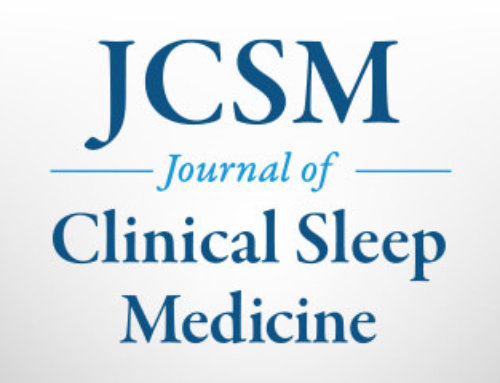Surgical treatment of sleep apnea can benefit patients who are unable to use CPAP
DARIEN, IL – A new clinical practice guideline developed by the American Academy of Sleep Medicine provides recommendations for the referral of adults with obstructive sleep apnea for surgical consultation. Surgical treatment of OSA can be an option for patients who struggle with CPAP therapy and others with certain anatomic features.
The guideline, available online as an accepted paper in the Journal of Clinical Sleep Medicine, provides recommendations for referral for upper airway or bariatric surgery for patients with sleep apnea who are intolerant or unaccepting of CPAP therapy, have persistent inadequate CPAP adherence, or have obvious upper airway anatomic abnormalities that may be amenable to surgery. It is an update to the AASM’s 2010 guideline, which made recommendations for specific surgical procedures, but did not address when to consider such options.
“While CPAP is considered the gold standard treatment for obstructive sleep apnea, its effectiveness can be compromised when patients are unable to adhere to the treatment or don’t receive sufficient benefit,” said Dr. David Kent, chair of the AASM task force, and assistant professor and director of sleep surgery within the department of otolaryngology-head and neck surgery at Vanderbilt University in Nashville, Tennessee. “Our review showed that surgery for obstructive sleep apnea results in a clinically significant reduction in excessive sleepiness, snoring, blood pressure, and several measures of sleep apnea severity, and leads to improvements in quality of life.”
Nearly 30 million adults in the U.S. have obstructive sleep apnea, a chronic disease that involves the repeated collapse of the upper airway during sleep. Common warning signs include snoring and excessive daytime sleepiness. A common treatment is CPAP therapy, which uses mild levels of air pressure, provided through a mask, to keep the throat open during sleep.
The guideline provides two strong recommendations for treatment of adults with obstructive sleep apnea who are intolerant or unaccepting of CPAP treatment, which clinicians should follow under most circumstances. If such a patient has a body mass index under 40, the sleep medicine provider should discuss referral to a sleep surgeon with the patient. If such a patient has a BMI of 35 or greater, the sleep medicine provider should discuss referral to a bariatric surgeon with the patient. Referrals to both providers can be discussed for patients with a BMI between 35 and 40. The guideline makes a conditional recommendation, which requires more clinical judgment, for discussion of referral to a sleep surgeon for adults with sleep apnea, a BMI under 40, and persistent inadequate CPAP adherence due to pressure-related side effects, as the available evidence suggests that upper airway surgery can help decrease CPAP pressure requirements and improve patient adherence to therapy. It also conditionally recommends that CPAP be provided as an initial treatment for sleep apnea in patients with a major upper airway anatomic abnormality, such as large tonsils, prior to consideration of referral for upper airway surgery. Other indications for surgery may justify surgical intervention prior to CPAP trial.
The guideline was developed by a task force of experts in sleep medicine, otolaryngology, and bariatric surgery, and it was approved by the AASM board of directors. The process included a systematic literature review, meta-analyses, and assessment of the evidence using the GRADE methodology. A draft of the guideline was made available for public comment.
“The guideline illustrates common clinical scenarios in which discussion of a referral for sleep or bariatric surgery may benefit the patient,” said Kent. “Nevertheless, recommendations for surgical referral should be based on the individual patient’s circumstances and are not intended to exclude other treatment options.”
The recommendations are based on an overall assessment of the quality of evidence, beneficial and harmful effects, patient values and preferences, and resource use. The ultimate judgment regarding any specific treatment must be made by the treating clinician and the patient, taking into consideration the individual circumstances of the patient, available treatment options, and resources.
The guideline was endorsed by the American Society for Metabolic and Bariatric Surgery and the Alliance of Sleep Apnea Partners and affirmed by the American Academy of Otolaryngology – Head and Neck Surgery.
Kent is listed as an inventor on patent applications for surgical treatment of sleep apnea owned and licensed by Vanderbilt University. The licensed treatments currently do not exist in prototype or commercial form and were not included in the task force review and analysis.
View more AASM practice guidelines.
###
To request a copy of the clinical practice guideline, “Referral of adults with obstructive sleep apnea for surgical consultation,” or the systematic review, meta-analysis, and GRADE assessment, or to arrange an interview with an AASM spokesperson, please contact the AASM at 630-737-9700 or media@aasm.org. Accepted papers, which are published online prior to their final inclusion in an issue, are not embargoed. The guideline is scheduled to be published in the December 2021 issue of the Journal of Clinical Sleep Medicine.
About the American Academy of Sleep Medicine
Established in 1975, the American Academy of Sleep Medicine is advancing sleep care and enhancing sleep health to improve lives. The AASM has a combined membership of 11,000 accredited member sleep centers and individual members, including physicians, scientists and other health care professionals.





